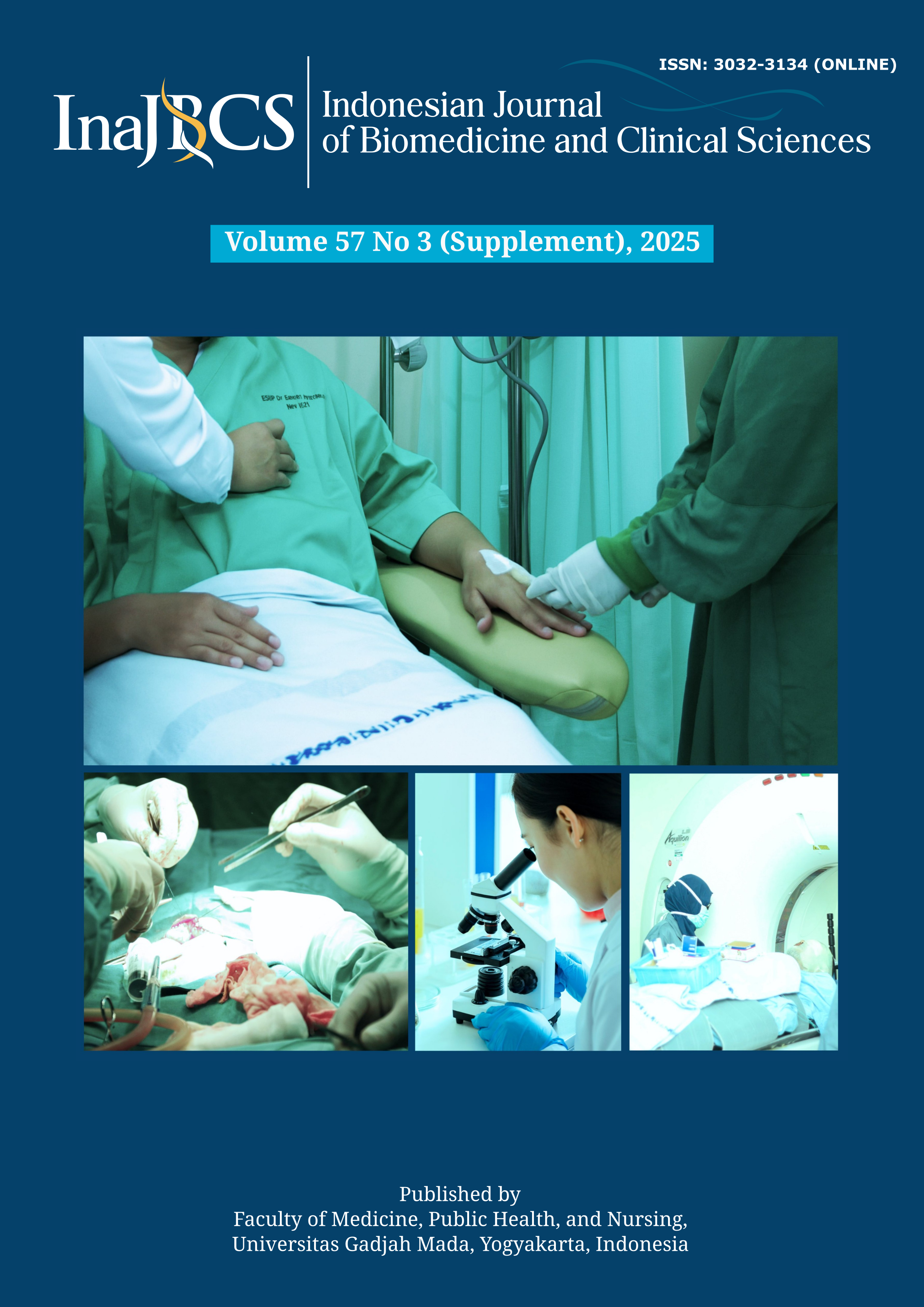Cost-effectiveness of percutaneous thrombectomy versus anticoagulant therapy in provoked deep vein thrombosis after total knee replacement: a case report
Abstract
Deep vein thrombosis (DVT) is a serious complication following major orthopedic surgery such as total knee replacement (TKR), especially in elderly patients with high-risk factors. A cost-effectiveness-based approach can help clinicians choose the most effective and efficient diagnostic and therapeutic strategies. We reported a 68-year-old woman who presented with a swollen right leg a week before admission, with a history of TKR surgery one month earlier and a Well score of 2 (moderate risk, 17% probability of TVD). She opted with diagnostic and therapeutic options: D-Dimer examination, Duplex Ultrasound (DUS), anticoagulant therapy, or Percutaneous Thrombectomy (PT). She had a history of hypertension, alcohol consumption, and advanced age, with a HAS-BLED score of 3. Decision tree analysis and folding back showed that the best strategy in terms of life expectancy (LE) improvement was a combination of D-Dimer and DUS, followed by PT, resulting in an LE of 7 years. If the patient opted for anticoagulation, the LE became 5 years, whereas if no intervention was performed, the LE was only 2 years. D-Dimer has a high sensitivity (95%), allowing exclusion of TVD at negative results, approaching the LE of patients without DVT (6.89 years). The cost of therapy was also analyzed, for example, PT was Rp 37,095,000, and anticoagulation was Rp 8,191,240. The Incremental Cost-Effectiveness Ratio (ICER) analysis showed a value of IDR 15,124,939/YLS or equivalent to $1,000/YLS, which is still considered cost-effective referring to the international threshold limit ($50,000/ QALY). The decision analysis and cost-effectiveness-based approach showed that the optimal strategy was a combination of D-Dimer and DUS examination, followed by PT. Although more expensive, it provided a significant increase in life expectancy and was still within the cost-effective limit. These findings support the importance of evidence-based clinical decision-making and economic efficiency in the management of DVT.






